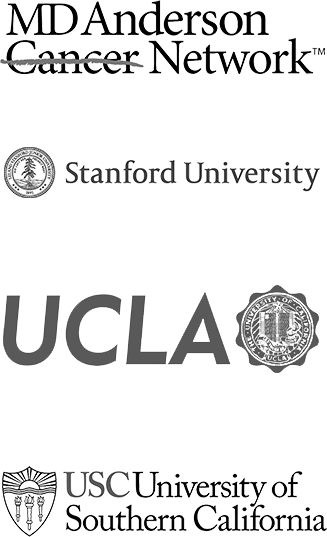Pulmonary Carcinoma Removal
Pulmonary carcinoma (lung cancer) is the leading cause of cancer deaths in the United States, accounting for more deaths each year than colon, prostate, and breast cancer combined according to the American Cancer Society. While the risk of developing lung cancer is dramatically higher among smokers, non-smokers are not immune as the disease can and does affect many adults who have never smoked. As with all forms of cancer, pulmonary carcinoma removal depends on a range of factors from patient to patient, including the type, stage, grade, origin, and individual health and genetic makeup of each person.
Pulmonary Carcinoma Removal
At the Cancer Center of Southern California, Dr. Sant P. Chawla and the oncology team use several sophisticated methods to treat and remove pulmonary carcinomas. Depending on the pulmonary tumor’s primary classification and type (non-small cell or small cell), the most common methods to remove lung carcinomas include:
Chemotherapy
Chemotherapy is a dose of one or a combination of several drugs designed to travel through the bloodstream to target and remove pulmonary carcinoma cells and to stop their growth. Chemotherapy can also help to alleviate the painful symptoms associated with pulmonary tumors. The Cancer Center of Southern California employs three methods for administering chemo:
- Intravenous (IV) – directly into the bloodstream
- Oral – ingested orally in pill or liquid form
- Injectable – treatment is applied at the site of the tumor(s) depending on the location
Radiation
Radiation therapy for lung cancer is applied when surgery and other treatment options prove insufficient to reach the tumors. It works by targeting the cancerous cells with high doses of focused radiation to kill the tumors, while avoiding damage to surrounding healthy tissue.
Dr. Chawla and the oncologists at the Cancer Center of Southern California apply radiation using several methods:
- Brachytherapy – Using radioactive “seeds” placed in or near the tumor itself, this method delivers high doses of internal radiation to the cancer cells, avoiding damage to healthy cells adjacent to the tumor. Brachytherapy typically takes one to two days, and can be used in conjunction with other methods designed to remove lung tumors.
- External Beam Radiation Therapy (EBRT) – Unlike brachytherapy, where the radiation is released directly into the pulmonary carcinoma tumors from inside the patient’s body, EBRT uses highly focused beams from a state of the art machine. EBRT is also designed to target cancer cells with a high dose of radiation while minimizing damage to neighboring healthy cells. External beam radiation is generally less invasive, and can be combined with surgery.
- Intensity Modulated Radiation Therapy (IMRT) – IMRT is a highly advanced radiation delivery method that uses high resolution computer assisted imaging technology to outline the parameters of often hard to reach pulmonary tumors in order to help shrink the cells as much as possible for removal.
Surgery
Minimally invasive (endoscopic) lung cancer surgery – Using a small incision near the tumor, an endoscope is used to visualize the inside of the tumor and surrounding muscle and tissue for greater precision and targeted treatment through the aid of diagnostic imaging. Smaller incisions are made for a less invasive procedure than traditional cancer removal surgery.
Robotic lung cancer surgery – In addition to the imaging capabilities provided by an endoscope, this method allows Dr. Chawla and the cancer team at the Cancer Center of Southern California to remove pulmonary carcinoma cells with the aid of robotic surgical arms controlled by a 3D console for greater accuracy, flexibility, and precision.
Next, read Lung Carcinoid Tumor L.A.


